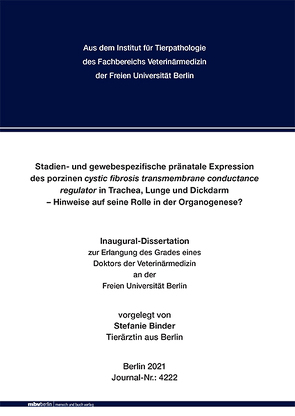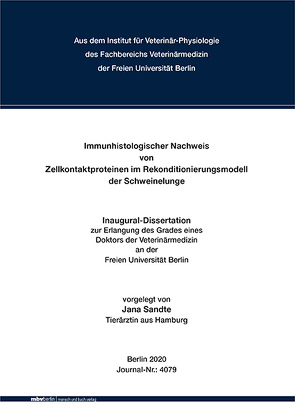
Atherosklerose ist von fundamentaler Bedeutung für zahlreiche kardiovaskulärer Folgeerkrankungen. Klinisch äußert sie sich meist erst nach Jahren oder Jahrzehnten durch Symptome ihrer Folgeerkrankungen. Die zentralen pathophysiologischen Faktoren dieser Erkrankung sind Endothelzelldysfunktionen, Ablagerungen von Blutfetten in den Gefäßwänden und chronische Entzündungsreaktionen. Kennzeichnend für Atherosklerose ist also die Ansammlung von proinflammatorischen Zellen und extrazellulären Matrixproteinen, wie Elastin, in der Gefäßintima. Ein Risiko für Atherosklerose ist die Plaqueruptur mit der subsequenten Bildung von Thromben, welche zu Herzinfarkten oder Schlaganfällen führen können. Präventionsansätze können die Mortalität dieser Krankheit drastisch senken. Die molekulare Bildgebung ermöglicht die nicht-invasive in vivo Visualisierung und Quantifizierung biologischer Prozesse auf molekularer und zellulärer Ebene. Diese Dissertation hat sich mit dem Potenzial der in vivo Magnetresonanztomographie für die molekulare Bildgebung von Atherosklerose befasst und neue Möglichkeiten in der Detektion dieser Erkrankung aufgezeigt.
Zum einen wurde im ersten Teil dieser Dissertation gezeigt, dass die elastinspezifische Sonde ähnliche Eigenschaften für die Durchführung von MR-Angiographien hat, wie klinisch verwendete Kontrastmittel. Dies ist von hoher Relevanz für die potentielle klinische Translation einer solchen Sonde.
Zum anderen konnte im zweiten Teil dieser Dissertation gezeigt werden, dass auf Basis einer simultanen molekularen MRT mit zwei Sonden die Charakterisierung der Plaquelast und der entzündlichen Aktivität von progressiver Atherosklerose im Mausmodell möglich ist. Der in vivo Nachweis und die Quantifizierung dieser mit Plaque-Instabilität verbundenen Biomarker in einem einzigen Scan können den Nachweis von instabilen Plaques ermöglichen und dadurch die Risikostratifizierung und Behandlungsführung von Patienten verbessern. Die duale Anwendung der elastin- und eisenoxidspezifischen Sonden bildet somit ein neuartiges Bildgebungsinstrument zur in vivo Charakterisierung der Plaqueruptur bei Atherosklerose.
Aktualisiert: 2021-10-21
> findR *

Lungs often have to be rejected from transplantation because they unfortunately include edema, atelectasis and immigrated inflammatory cells or pneumonia (van Raemdonck et al. 2009).
The in vitro reconditioning of lungs as a strategy to improve the mismatch between the need for donor lungs and the organs suitable for transplantation was pursued in a project to optimize a reperfusion model in lung transplants at the University Hospital Eppendorf in Hamburg. In this project, an ex vivo reconditioning system with a protocol for the reconditioning and an as optimal as possible reperfusion cycle was developed. The influence of the system structure and the perfusion solution as well as pulmonary damage by aspiration was also investigated (Wipper et al. 2007, 2008, 2009, 2010, 2011).
The aim of this research was to clarify the extent to which tight-junction, adherence junction and gap-junction proteins change due to the influence of reconditioning, the different system components and the damage of the lungs by aspiration and their different treatments. Additionally an investigation as to how clinical and histological parameters of the project and from this research correlate were conducted. There is already evidence that tight-junction proteins (reviewed by Cummins 2012), adherence binding proteins (De Boer et al. 2008), and gap-junction proteins (Sarieddine et al. 2009) play a role in lung disease.
To clarify this question, an immunofluorescence microscopic examination of the experimental groups of the project was carried out and the intensity of the fluorescence in the respiratory epithelium, endothelium and alveolar septa was evaluated.
As representatives of the tight-junction proteins Claudin-3, Claudin-4 and Claudin-5, Occludin and ZO-1 were selected. β-Catenin and E-Cadherin were studied as representatives of the adherence-binding proteins and Cx43 as representative of the gap-junction proteins.
The results of this study show that changes in the fluorescence intensity of the investigated proteins are observed, compared to healthy lung (prae-group); especially, in the endothelium and attenuated also in the alveolar septa in the aspiration groups of the project, in which also the clinically functional values and the LIS are changed. Claudin-5 and Occludin are reduced there, while Claudin-3 is increased. Cx43 is also elevated in these groups. Interestingly, in the aspiration group, where antithymocyte globulin was added in addition to the reconditioning and the intensive care measures, there are no changes in Claudin-5 and Cx43 and these values are consistent with the good clinical and histological values.
It is also noticeable in the respiratory epithelium that occludin is decreased in the investigated aspiration groups.
In the experimental groups of the closed system, there are hardly any changes in the fluorescence intensity compared to the prae-group. An exception is ß-Catenin, which is partially significantly reduced in the endothelium. However, ß-Catenin is reduced in all groups of the project.
When comparing the closed system with the open system (group 3, which was used as a control group of the aspirational experiments), for some proteins it is noticeable that the closed system is somewhat closer to the condition of the healthy lung. For occludin this is evident in all three localizations (endothelium, respiratory epithelium and alveolar septa) but also for Claudin-5 and Cx43 in the endothelium.
In summary, it can be said that the experimental influences of this project have a clear influence on tight-junction, adherence and gap-junction proteins. This shows that these proteins are involved in the mechanisms that underlie the (patho-) physiological changes.
Aktualisiert: 2022-12-31
> findR *

One of the most devastating diseases of honey bees worldwide is the epizootic American Foulbrood (AFB) caused by Paenibacillus larvae, which exclusively damages the brood. Honey bee larvae become infected by ingesting spore contaminated food. After germination of the spores in the midgut lumen, P. lavae follows a non-invasive, commensal lifestyle and vegetative bacteria start to massively proliferate. After degradation of the peritrophic membrane P. larvae switches to an invasive, destructive lifestyle and attacks the midgut epithelium of the larva. After breaching the midgut epithelium, P. larvae enters the hemocoel leading to a generalized infection and the death of the host. The aim of this thesis was the further elucidation of molecular details of the host-pathogen interaction during pathogenesis of an infection of bee larvae with P. larvae. For this purpose two confirmed virulence factors were further investigated: PlCBP49 secreted by P. larvae genotypes ERIC I and ERIC II, as well as the ERIC II specific S-layer protein SplA.
At first a further characterization of PlCBP49, a virulence factor with chitin-binding and -degrading activity, was performed. This general virulence factor is used by P. larvae genotypes ERIC I and ERIC II to degrade the peritrophic membrane (PM). Since the degradation of the PM marks the transition from non-invasive to invasive lifestyle and PlCBP49 is secreted from both P. larvae genotypes, this could be a possible intervention point in the control of AFB. In context of this work additional similarities of PlCBP49 and CBP21 of Serratia marcescens, a well described member of the AA10 family of lytic polysaccharide monooxygenases (LPMOs), could be demonstrated. Therefor cbp49 was successfully expressed in E. coli and assays were performed to further functionally and biochemically characterize PlCBP49. Besides the preference for β-chitin as substrate, the best substrate turnover was achieved after two hours of incubation at pH 7. These results and the first product profile of PlCBP49 illustrate many similarities with CBP21. The assumption that PlCBP49 degrades chitin substrates like CBP21 over a metal ion-dependent, oxidative mechanism could be sustained and the results of this work describe basic parameters for future in-depth studies.
In this study the ERIC II-specific S-layer Protein SplA was expressed in the naturally SplAdeficient ERIC I strain ATCC9545. The heterologous expression could be verified in vivo by fluorescence-labelled monoclonal antibodies and fluorescence microscopy. In exposure bioassays with the ERIC I+splA mutant no hyper-virulence in comparison with the wild type could be detected. Cloning of only one virulence factor is not sufficient to initiate the complete pathogenetic strategy of P. larvae ERIC II. Additional not yet known factors are presumably necessary to trigger the complex pathogenetic strategy.
The investigation of the immune response of larva during an infection with P. larvae was already subject of several studies with contradicting results. The influence of the infecting P. larvae genotype has been utterly neglected. Through the comparative transcriptome analysis, via RNA-Seq, it could be demonstrated that an infection of larvae with the different P. larvae genotypes ERIC I or ERIC II, results in a change of expression of immune-relevant genes three days after infection. The increased expression of antimicrobial peptides (AMPs) was outstanding. Depending on the infecting P. larvae genotype different combinations of AMPs were expressed. Furthermore a stronger immune response was observed in ERIC IIinfected larvae and the assumed masking of P. larvae ERIC II through the S-layer protein could be rejected. These results point to a genotype-specific immune response of larvae to a P. larvae infection. Although insects are devoid of an adaptive immune system, in the present study it could be demonstrated that not solely the species of the pathogen, but also the infecting genotype is a crucial factor and has profound influence on the host immune response. Further investigations of the host-pathogen interaction of honey bee larvae and P. larvae need to consider the infecting genotype of the pathogen.
In an additional experiment the expression of selected immune-relevant genes was analysed in individual larvae and the results of the comparative transcriptome analysis could be verified. In addition to the expression of different AMPs, depending on the infecting genotype, a stronger immune response in ERIC II-infected larvae could be approved. Since ERIC IIinfected larvae die within a very short time and mount a stronger immune response, it seems likely that the costly immune response contributes to the premature death of the larva.
Taken together in this thesis the general virulence factor PlCBP49 was further biochemically characterized. In addition the investigation of the pathogenetic strategy of P. larvae ERIC II was advanced through the heterologous expression of SplA in P. larvae ERIC I. Furthermore the immune response of the larva was analysed and it could be demonstrated that not only the pathogen species, but also the genotype is crucial for the host immune response. Thesen results broaden our understanding of host-pathogen interaction of honey bee larvae and P. larvae.
Aktualisiert: 2022-12-31
> findR *
MEHR ANZEIGEN
Bücher zum Thema immunofluorescence
Sie suchen ein Buch über immunofluorescence? Bei Buch findr finden Sie eine große Auswahl Bücher zum
Thema immunofluorescence. Entdecken Sie neue Bücher oder Klassiker für Sie selbst oder zum Verschenken. Buch findr
hat zahlreiche Bücher zum Thema immunofluorescence im Sortiment. Nehmen Sie sich Zeit zum Stöbern und finden Sie das
passende Buch für Ihr Lesevergnügen. Stöbern Sie durch unser Angebot und finden Sie aus unserer großen Auswahl das
Buch, das Ihnen zusagt. Bei Buch findr finden Sie Romane, Ratgeber, wissenschaftliche und populärwissenschaftliche
Bücher uvm. Bestellen Sie Ihr Buch zum Thema immunofluorescence einfach online und lassen Sie es sich bequem nach
Hause schicken. Wir wünschen Ihnen schöne und entspannte Lesemomente mit Ihrem Buch.
immunofluorescence - Große Auswahl Bücher bei Buch findr
Bei uns finden Sie Bücher beliebter Autoren, Neuerscheinungen, Bestseller genauso wie alte Schätze. Bücher zum
Thema immunofluorescence, die Ihre Fantasie anregen und Bücher, die Sie weiterbilden und Ihnen wissenschaftliche
Fakten vermitteln. Ganz nach Ihrem Geschmack ist das passende Buch für Sie dabei. Finden Sie eine große Auswahl
Bücher verschiedenster Genres, Verlage, Autoren bei Buchfindr:
Sie haben viele Möglichkeiten bei Buch findr die passenden Bücher für Ihr Lesevergnügen zu entdecken. Nutzen Sie
unsere Suchfunktionen, um zu stöbern und für Sie interessante Bücher in den unterschiedlichen Genres und Kategorien
zu finden. Unter immunofluorescence und weitere Themen und Kategorien finden Sie schnell und einfach eine Auflistung
thematisch passender Bücher. Probieren Sie es aus, legen Sie jetzt los! Ihrem Lesevergnügen steht nichts im Wege.
Nutzen Sie die Vorteile Ihre Bücher online zu kaufen und bekommen Sie die bestellten Bücher schnell und bequem
zugestellt. Nehmen Sie sich die Zeit, online die Bücher Ihrer Wahl anzulesen, Buchempfehlungen und Rezensionen zu
studieren, Informationen zu Autoren zu lesen. Viel Spaß beim Lesen wünscht Ihnen das Team von Buchfindr.


